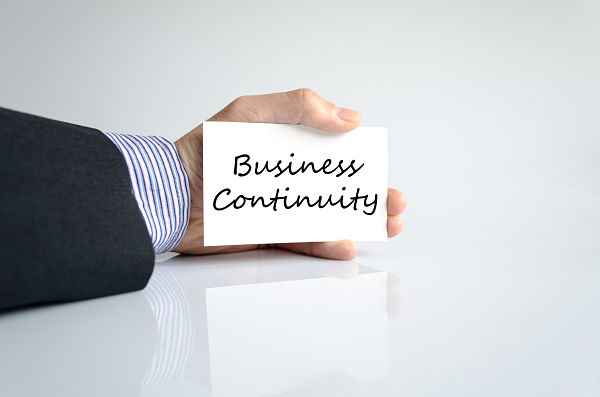- July 28, 2022
- Catagory business continuity
Why any data-driven business needs a UPS
We often talk about how data is the lifeblood of every business, but it’s not much use without power. That’s why any disaster recovery plan should include the use of an uninterruptable power supply (UPS).
Regardless of why there there’s a power loss, be it natural disaster, a localized outage, or a wider electricity grid failure, you need to keep mission critical systems up and running as best you can.

Having a UPS in place assumes your primary facility is still operational – depending on the natural disaster, your primary location could be physically damaged by fire or flood, for example. But if it is undamaged aside from a power outage, having a UPS kick in immediately for mission critical systems enables business continuity with little disruption to your customers.
Bear in mind that a UPS is not a standby generator or an auxiliary power system – it’s a battery-based device that will deliver provide near-instantaneous power as soon as an outage of the primary power source is detected. No matter how extreme the disruption, a UPS will provide a constant, consistent stream of energy. It will also compensate for other power-related issues such as voltage surges, spikes and sags, and any frequency differences – having a UPS in place all about maintaining stability during a disruption.
That being said, it may not be feasible to keep all systems running with a UPS, so your disaster recovery plan should outline which systems need to be maintained in the event of a power outage. If you’re a healthcare provider, for example, you’ll want to focus on powering the systems essential for delivering critical care in a hospital – having reliable power becomes a matter of life or death.
A healthcare facility is much like a data center, and even if you’re leveraging cloud computing for applications and data storage, any business regardless of its focus still has some on-premises IT infrastructure that needs to keep running, including network gear to connect to those cloud services. Ideally, any primary power outage is temporary and will enable you to continue core operations until the issue is resolved. Worst case scenario, you’ve bought time to figure out what your longer-term strategy will be if the nature of the interruption is especially serious and not expected to be resolved quickly, which can be the case with weather-related disasters.
If you’ve not included a UPS in your data protection and disaster recovery planning and you’re not sure how to best configure one, consult your managed service provider. Given their uptime commitments, they understand the need for uninterruptable power supply if they are to meet their Service Level Agreements (SLAs) with their customers.
Your managed service provider can help you map out where best to deploy a UPS and prioritize what systems must stay on at all costs – reliability and redundancy are their reasons for being. They can also help you refresh and update your disaster recovery plan to ensure business continuity in the event of a power outage.
As much as data is the lifeblood of business, there’s no pulse without power. And remember, it’s just a matter of when a major disruption occurs, not if, whether it’s bad weather that causes a power outage or a problem with the local grid. Having a UPS is essential if you’re to restore data and applications without any noticeable interruptions to key business functions.
- May 30, 2019
- Catagory business continuity
3 Key Benefits Of A Business Continuity Plan
You might think a business continuity plan is a luxury—something only larger organizations can afford or something you’ll do during a slow period. But planning for disaster is not just good preventative medicine. It contributes to a healthy business in three meaningful ways.

Culture
Being prepared is a state of mind. When your team knows you’re prepared for the worst, they can move forward with any business initiative with confidence.
Organizations that have a business continuity plan in place nurture employees that are adaptable and proactive when things to do go wrong. Planning for disaster becomes a subtle part of everything they do, making them adept at automatically assessing the levels of risk associated with new ventures and more agile. Small disruptions don’t phase them because the business already has a plan in place for the worst-case scenario.
Competitiveness
The confidence your employees have because you’ve got a rock-solid business continuity plan is picked up by your customers. Letting them know you’re proactively planning for disaster sends a message they can count on you, and so can your investors, business partners and other stakeholders.
Having a business continuity plan can also set you apart from your competitors and is something you can market to potential customers. They may not even consider that your planning is in their best interests, but it will help you stand out when it comes time for them to make a buying decision.
Compliance
In an era of privacy legislation that includes the Personal Information Protection and Electronic Documents Act (PIPEDA) and the General Protection Data Regulation, planning for disaster helps you stay compliant with government regulation and industry standards—yet another way to maintain competitive advantage.
Even if your industry isn’t heavily regulated, adhering to standards and best practices by keeping them in mind during your business continuity planning demonstrates a commitment to quality and accountability. Should new legislation be introduced that affects your operations, or you expand your business into a more regulated sector, having a mindset in place that guarantees business uptime will help you easily adapt to new realities quickly, giving both you and your customers peace of mind.
Business continuity keeps you ahead of the game
Planning for disaster is a must-have, not a nice-to-have. Don’t wait until the worst-case scenario hits before you start your business continuity planning. Making the upfront investment today will pay off in the form of confident employees and customers, and a healthy bottom line.
If you haven’t begun to think about disaster recovery planning or feel your plan needs an update, check out our Disaster Recovery Primer.




 Latest Blogs
Latest Blogs FAQ
FAQ